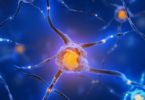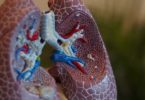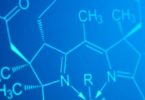Objective Chemical Practice Problems / Questions:
Ques. The number of gram molecules of a substance present in unit volume is termed as
(a) Activity
(b) Normal solution
(c) Molar concentration
(d) Active mass
Ques. Theory of ‘active mass’ indicates that the rate of chemical reaction is directly proportional to the
(a) Equilibrium constant
(b) Properties of reactants
(c) Volume of apparatus
(d) Concentration of reactants
Ques. The equilibrium constant in a reversible reaction at a given temperature
(a) Depends on the initial concentration of the reactants
(b) Depends on the concentration of the products at equilibrium
(c) Does not depend on the initial concentrations
(d) It is not characteristic of the reaction
Ques. Raising the temperature of an equilibrium system
(a) Favours the exothermic reaction only
(b) Favours the endothermic reaction only
(c) Favours both the exothermic and endothermic reactions
(d) Favours neither the exothermic nor endothermic reactions
Ques. According to law of mass action rate of a chemical reaction is proportional to
(a) Concentration of reactants
(b) Molar concentration of reactants
(c) Concentration of products
(d) Molar concentration of products
Related: Thermodynamics Sample Paper (Physics)
Ques. In any chemical reaction, equilibrium is supposed to be establish when
(a) Mutual opposite reactions undergo
(b) Concentration of reactants and resulting products are equal
(c) Velocity of mutual reactions become equal
(d) The temperature of mutual opposite reactions become equal
Ques. In a reaction the rate of reaction is proportional to its active mass, this statement is known as
(a) Law of mass action
(b) Le-chatelier principle
(c) Faraday law of electrolysis
(d) Law of constant proportion
Ques. The rate at which substances react depends on their
(a) Atomic weight
(b) Molecular weight
(c) Equivalent weight
(d) Active mass
Ques. The equilibrium constant in a reversible reaction at a given temperature
(a) Depends on the initial concentration of the reactants
(b) Depends on the concentration of the products at equilibrium
(c) Does not depend on the initial concentrations
(d) It is not characteristic of the reaction
Related: cell structure and function worksheet
Ques. Which of the following will favour the reverse reaction in a chemical equilibrium?
(a) Increasing the concentration of the reactants
(b) Removal of at least one of the products at regular intervals
(c) Increasing the concentration of one or more of the products
(d) Increasing the pressure
Ques. K for the synthesis of HI is 50. K for dissociation of HI is
(a) 50
(b) 5
(c) 0.2
(d) 0.02
Ques. Which of the following conditions represents an equilibrium?
(a) Freezing of ice in a open vessel, temperature of ice is constant
(b) Few drops of water is present along with air in a balloon, temperature of balloon is constant
(c) Water is boiling in an open vessel over stove, temperature of water is constant
(d) None of these are correct for the equilibrium
Ques. Which of the following is a characteristic of a reversible reaction?
(a) Number of moles of reactants and products are equal
(b) It can be influenced by a catalyst
(c) It can never proceed to completion
(d) None of these
Related: questions on Centre of Mass
Ques. pH values of HCl and NaOH solutions each of strength N/100 will be respectively
(a) 2 and 2
(b) 2 and 12
(c) 12 and 2
(d) 2 and 10
Ques. Hydrolysis of sodium acetate will give
(a) Acidic solution
(b) Basic solution
(c) Neutral solution
(d) Normal solution
Ques. Which is false?
(a) The greater the concentration of the substances involved in a reaction, the lower the speed of the reaction
(b) The point of dynamic equilibrium is reached when the reaction rate in one direction just balances the reaction rate in the opposite direction
(c) The dissociation of weak electrolyte is a reversible reaction
(d) The presence of free ions facilitates chemical changes
Ques. A solution of sodium borate has a pH of approximately
(a) < 7
(b) > 7
(c) = 7
(d) Between 4 to 5
Related: Carboxylic Acids Sample Paper (Chemistry)
Ques. Le-Chatelier’s principle is applicable only to a
(a) System in equilibrium
(b) Irreversible reaction
(c) Homogeneous reaction
(d) Heterogeneous reaction
Ques. The active mass of 64 gm of HI in a two litre flask would be
(a) 2
(b) 1
(c) 5
(d) 0.25
Ques. When rate of forward reaction becomes equal to backward reaction, this state is termed as?
(a) Chemical equilibrium
(b) Reversible state
(c) Equilibrium
(d) All of these
Ques. Which of the following statements regarding a chemical equilibrium is wrong?
(a) An equilibrium can be shifted by altering the temperature or pressure
(b) An equilibrium is dynamic
(c) The same state of equilibrium is reached whether one starts with the reactants or the products
(d) The forward reaction is favoured by the addition of a catalyst
Related: Redox Reactions Sample Paper
Ques. The chemical equilibrium of a reversible reaction is not influenced by
(a) Pressure
(b) Catalyst
(c) Concentration of the reactants
(d) Temperature
Ques. The law of mass action was enunciated by
(a) Guldberg and Waage
(b) Bodenstein
(c) Birthelot
(d) Graham
Ques. A buffer solution has equal volumes of 0.2 M NH4OH and 0.02 M NH4Cl. The pKb of the base is 5. The pH is
(a) 10
(b) 9
(c) 4
(d) 7
Ques. All reactions which have chemical disintegration
(a) Is reversible
(b) Is reversible and endothermic
(c) Is exothermic
(d) Is reversible or irreversible and endothermic or exothermic
Related: Kingdom Monera (Biology) Sample Paper
Ques. Chemical equations convey quantitative information on the
(a) Type of atoms/molecules taking part in the reaction
(b) Number of atoms/molecules of the reactants and products involved in the reaction
(c) Relative number of moles of reactants and products involved in the reaction
(d) Quantity of reactant consumed and quantity of product formed
Ques. Under a given set of experimental conditions, with increase in the concentration of the reactants, the rate of a chemical reaction
(a) Decreases
(b) Increases
(c) Remains unaltered
(d) First decreases and then increases
Ques. A chemical reaction is at equilibrium when
(a) Reactants are completely transformed into products
(b) The rates of forward and backward reactions are equal
(c) Formation of products is minimized
(d) Equal amounts of reactants and products are present
Ques. A reversible reaction is one which
(a) Proceeds in one direction
(b) Proceeds in both directions
(c) Proceeds spontaneously
(d) All the statements are wrong
Related: Cell Division multiple choice questions and answers
Ques. When rate of forward reaction becomes equal to backward reaction, this state is termed as?
(a) Chemical equilibrium
(b) Reversible state
(c) Equilibrium
(d) All of these
Ques. For the reaction H2 + I2 = 2HI, the equilibrium concentration of H2, I2 and HI are 8.0, 3.0 and 28.0 mol per litre respectively, the equilibrium constant of the reaction is
(a) 30.66
(b) 32.66
(c) 34.66
(d) 36.66
Ques. If a system is at equilibrium the rate of forward to the reverse reaction is
(a) Less
(b) Equal
(c) High
(d) At equilibrium
Ques. The acid that results when a base accepts a proton is called
(a) Conjugate base of the acid
(b) Conjugate protonated base
(c) Lewis base
(d) Conjugate acid of the base
Related: questions on Capillarity in physics
Ques. In a solution of pH = 5, more acid is added in order to reduce the pH = 2. The increase in hydrogen ion concentration is
(a) 100 times
(b) 1000 times
(c) 3 times
(d) 5 times
Ques. A solution of sodium bicarbonate in water turns
(a) Phenolphthalein pink
(b) Methyl orange yellow
(c) Methyl orange red
(d) Blue litmus red
Ques. In a reaction the rate of reaction is proportional to its active mass, this statement is known as
(a) Law of mass action
(b) Le-chatelier principle
(c) Faraday law of electrolysis
(d) Law of constant proportion
Ques. A reversible chemical reaction having two reactants in equilibrium. If the concentrations of the reactants are doubled, then the equilibrium constant will
(a) Also be doubled
(b) Be halved
(c) Become one-fourth
(d) Remain the same
Ques. The solution of strong acid and weak base (FeCl3) is
(a) Acidic
(b) Basic
(c) Neutral
(d) None of these
Ques. According to law of mass action rate of a chemical reaction is proportional to
(a) Concentration of reactants
(b) Molar concentration of reactants
(c) Concentration of products
(d) Molar concentration of products
Ques. A reversible chemical reaction having two reactants in equilibrium. If the concentrations of the reactants are doubled, then the equilibrium constant will
(a) Also be doubled
(b) Be halved
(c) Become one-fourth
(d) Remain the same
Ques. Theory of ionization was given by
(a) Rutherford
(b) Graham
(c) Faraday
(d) Arrhenius
Ques. The number of gram molecules of a substance present in unit volume is termed as
(a) Activity
(b) Normal solution
(c) Molar concentration
(d) Active mass
Ques. In any chemical reaction, equilibrium is supposed to be establish when
(a) Mutual opposite reactions undergo
(b) Concentration of reactants and resulting products are equal
(c) Velocity of mutual reactions become equal
(d) The temperature of mutual opposite reactions become equal







this really helped my son.
Incredible! This blog looks exactly like my old one! It’s on a entirely different subject but it has pretty much the same layout and design. Great choice of colors!
please add more chemistry papers